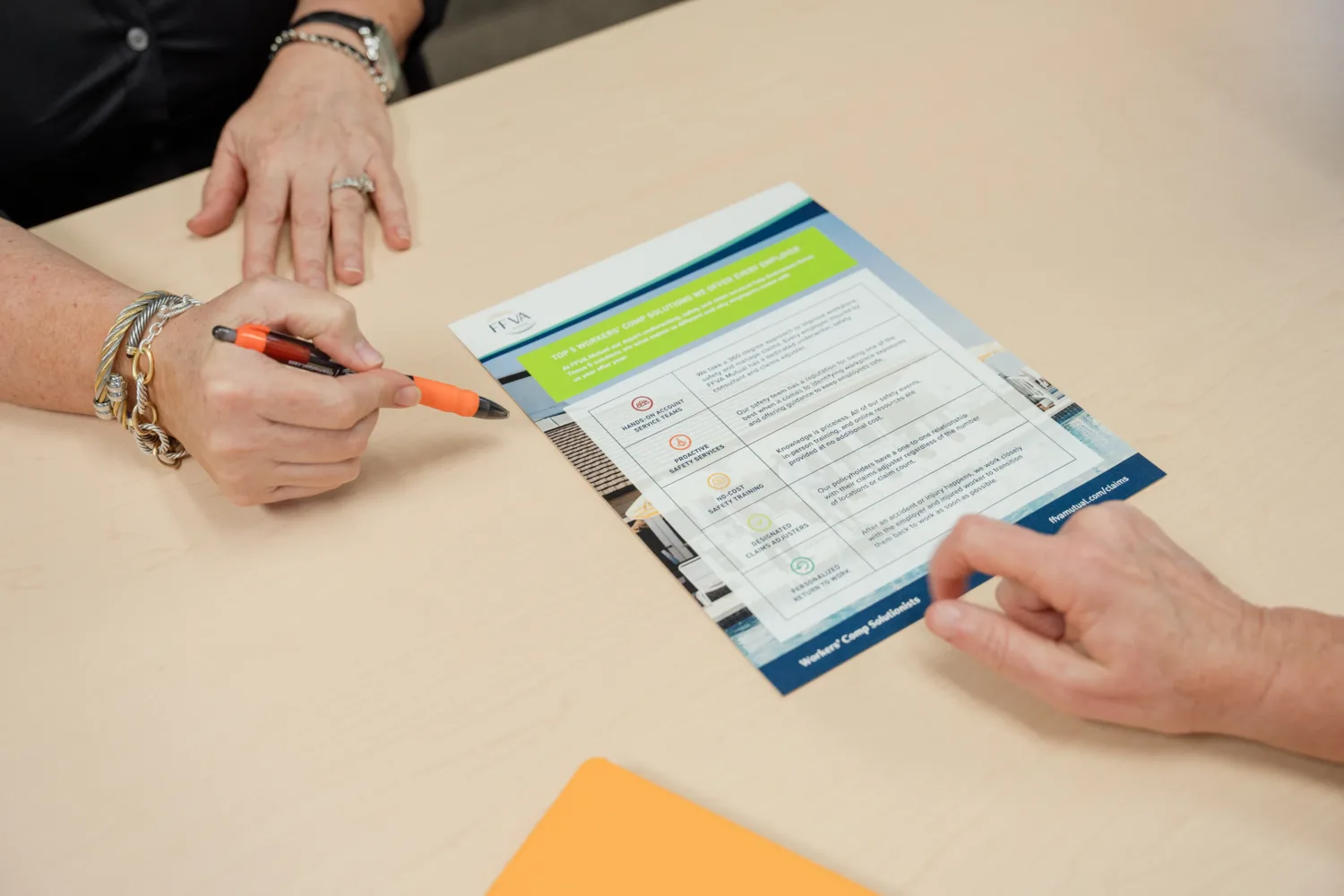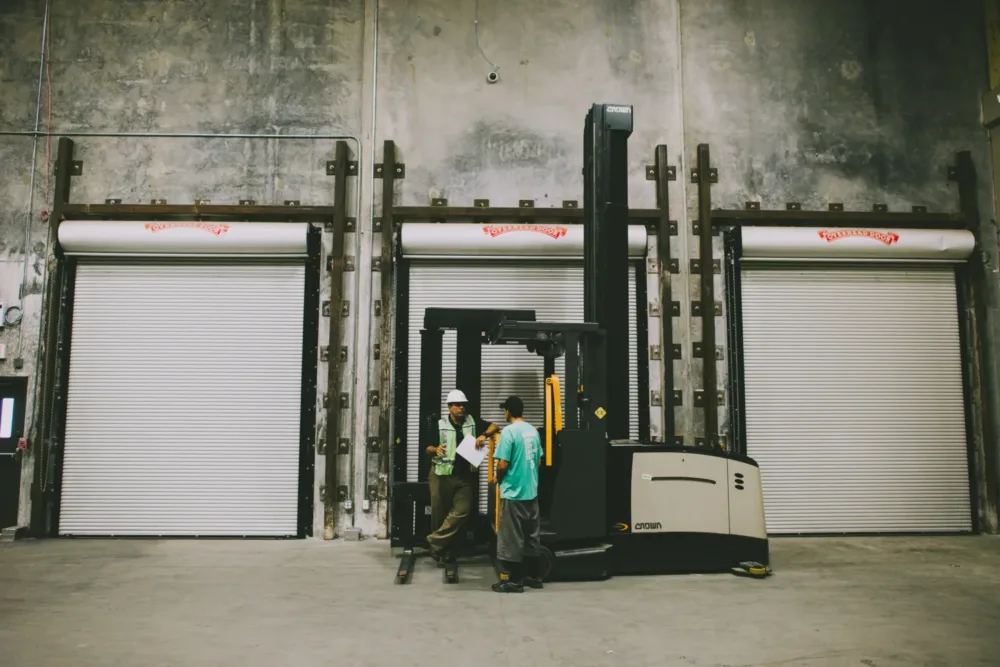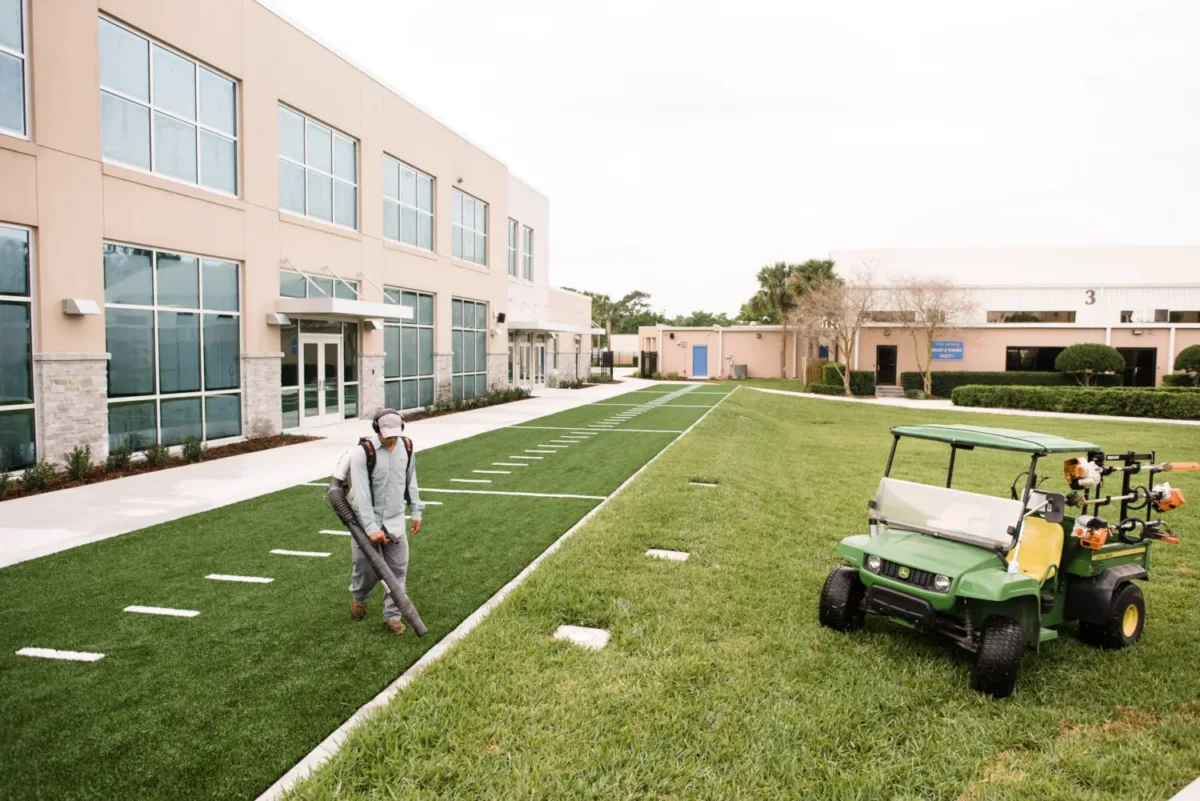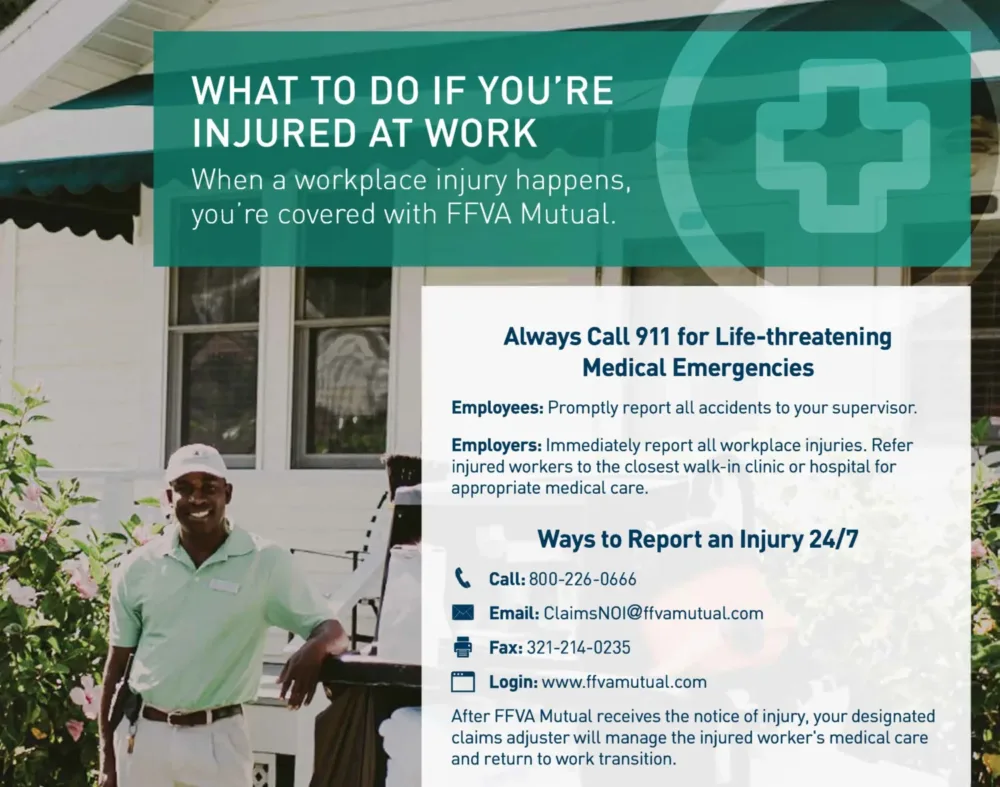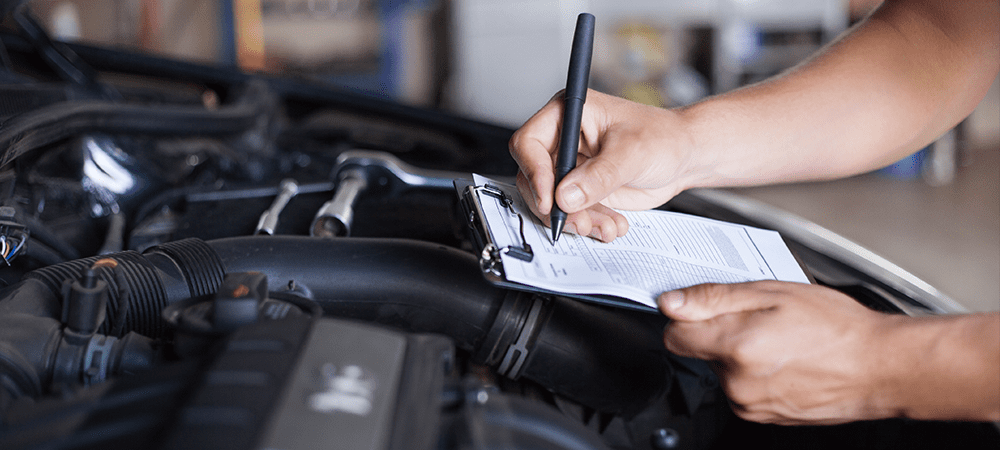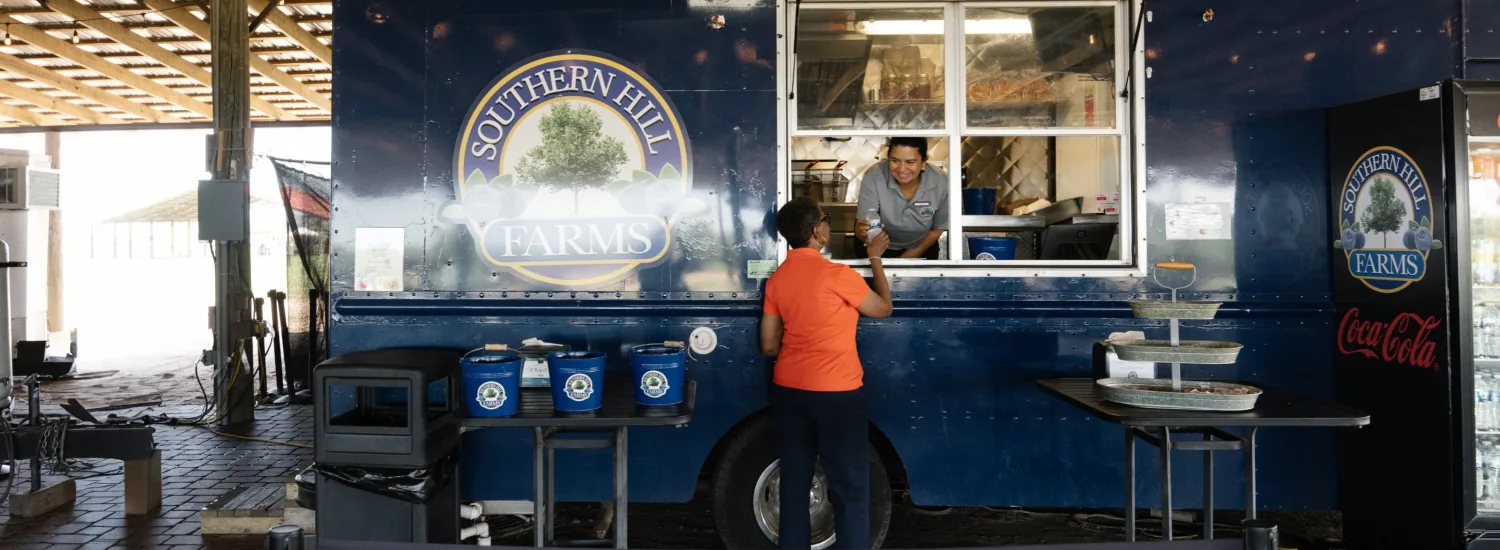Is Your Fleet Safety Plan Enough?
The goal of a fleet safety program is to protect an organization’s drivers, reduce crashes and maintain a reliable fleet of vehicles. However, roadway risks are high, with preliminary estimates suggesting over 44,600 Americans died in preventable traffic crashes in 2024, according to the National Safety Council (NSC).
For companies operating fleets, a proactive fleet safety program isn’t just about compliance — it’s a lifeline for protecting drivers, reducing costly incidents and safeguarding your bottom line. But what, exactly, is an effective fleet safety plan?
What Is Fleet Safety?
Fleet safety is a strategic, proactive approach to minimizing accidents, injuries and vehicle damage through systematic policies, driver training and equipment maintenance. It’s not just reactive measures — it’s about anticipating risks before they escalate.
With motor-vehicle crashes ranking as the costliest workers’ compensation claims (averaging $90,914 per claim from 2022–2023, per NSC), poor fleet safety doesn’t just endanger lives — it disrupts operations, inflates insurance costs and tarnishes reputations.
What Is a Fleet Safety Program?
A fleet safety program is your actionable blueprint for protecting drivers and assets. Over 4.35 million U.S. workers regularly drive for work, facing risks from distracted driving to mechanical failures. An effective program combines three pillars:
- Vehicle inspections: Pre-trip checks to catch issues like worn tires or faulty brakes.
- Driver safety training: Coaching on defensive driving and accident prevention.
- Preventative maintenance: Scheduled servicing aligned with manufacturer guidelines.
By addressing both driver behavior and vehicle condition, these programs reduce preventable incidents, keeping your team safe and your fleet productive.
Why Is Fleet Safety So Important?
Ignoring fleet safety is a gamble no business can afford. Beyond the human toll of collisions, the financial and operational impacts are staggering.
Preventive maintenance plans are essential for securing the long-term safety of your employees and keeping company vehicles running at peak condition. Having your drivers routinely inspect and monitor vehicle conditions allows you to identify minor (and major) issues before they mature into dangerous problems. And a consistent maintenance schedule can give you and your employees the peace of mind needed to get the job done without unnecessary risk.
The Benefits of a Fleet Safety Program
Here’s how a robust fleet safety strategy protects your people and property:
- Accident reduction: The Occupational Safety and Health Administration (OSHA) ranks fleet maintenance and inspection among the most effective tools for reducing workplace vehicle accidents. Company vehicles that are well-maintained perform better in almost every situation, which is especially important when reacting to unexpected roadway hazards.
- Improved driver confidence: Vehicles in top condition are much easier to operate and control, in part because drivers trust they will perform reliably (and predictably) in difficult situations. Additionally, your employees will be more likely to drive safely and handle your fleet with care if each vehicle is routinely maintained.
- Reduced repair costs: Establishing fleet safety guidelines can help you save on overall maintenance costs, as scheduled repair work is typically three to four times more cost-effective than unplanned repairs. Vehicle repair schedules should always consider the specific mileage recommendations provided by the manufacturer and correspond to state and federal regulations.
- Increased vehicle productivity: Lengthy repairs can put vehicles out of commission for days, even weeks, which may seriously impact productivity for companies with smaller fleets. Preventative maintenance helps minimize interruptions to your workflow by reducing the frequency of breakdowns and major part replacements.
- Positive brand relations: Customers will appreciate your clean, well-maintained vehicles almost as much as your employees. By devoting time and energy to your fleet’s upkeep, you can demonstrate a commitment to professionalism and attention to detail that will reflect positively on your brand.
Key Elements of a Fleet Safety Program
A strong fleet safety program doesn’t happen by accident — it’s built through deliberate planning, consistent execution and a commitment to continuous improvement.
Here are the key elements that form the foundation of an effective, compliant and results-driven program:
1. Establishing Written Safety Policies
Every successful fleet safety program starts with a clear, company-wide policy outlining expectations for safe driving, vehicle use and employee behavior. These written standards should cover distracted driving, speed limits, seat belt use and reporting procedures for accidents or vehicle damage.
Include specific protocols for pre-trip inspections, maintenance schedules and documentation to ensure alignment with OSHA regulations and Federal Motor Carrier Safety Administration (FMCSA) standards. A well-defined policy ensures every employee understands what’s expected — and what’s at stake.
2. Selecting and Training Qualified Drivers
Your drivers are the heart of your fleet, so their selection and training are critical. Conduct background checks and motor vehicle record (MVR) reviews before hiring to ensure drivers meet company standards. Once onboard, provide defensive driving courses, ongoing safety refreshers and coaching for high-risk behaviors like speeding, distracted driving or harsh braking.
Training should be continuous, not one-time. Pair learning with recognition; celebrating safe driving milestones reinforces engagement and reduces preventable incidents.
3. Maintaining and Inspecting Fleet Vehicles Regularly
Routine maintenance and inspection schedules are the backbone of fleet reliability and driver safety. Implement both preventive maintenance (regular servicing per manufacturer guidelines) and daily pre- and post-trip inspections to identify mechanical issues early.
Use a standardized fleet safety checklist to document findings and address repairs promptly. Well-maintained vehicles reduce breakdowns, improve driver confidence and lower total cost of ownership.
4. Monitoring Fleet Performance and Driver Behavior
Modern fleet safety depends on visibility. Telematics systems, GPS tracking and dashcams give managers real-time insights into vehicle performance and driver behavior. These tools detect unsafe actions — like hard braking or speeding — and provide data for targeted coaching.
Technology shouldn’t replace human oversight but enhance it. When used constructively, data-driven feedback empowers drivers to improve performance and fosters transparency across your team.
5. Creating a Clear Response Plan and Reporting Protocol
Even with strong policies, incidents can still happen. That’s why a well-documented incident response plan is essential. Establish clear procedures for collisions, breakdowns or near misses, including reporting timelines, communication chains and follow-up investigations.
Standardizing the process ensures consistency, protects employees during stressful events and helps your organization learn from each incident to prevent future ones.
6. Building a Culture of Safety and Leading by Example
Leadership commitment determines whether fleet safety succeeds or fails. Managers must model the behaviors they expect — wearing seat belts, avoiding distracted driving and prioritizing caution over deadlines.
Hold monthly safety meetings to review performance metrics, recognize safe drivers and discuss emerging roadway risks. When employees see management investing in safety resources and acting on feedback, accountability becomes part of the culture.
How To Conduct a Fleet Vehicle Inspection
The best way to keep your drivers safe and secure is for them to inspect each vehicle before, during and after every trip, no matter how brief or routine the journey might be. Drivers should be encouraged to record the results of vehicle check-ups using a standardized vehicle inspection checklist. While it may sound excessive, a proactive approach to roadway safety requires close attention to even the minor details of your fleet’s condition.
Here are a few things your fleet safety checklist should include:
- Body damage
- Tire pressure and excessive wear
- Headlights, brake lights, tail lights and hazard lights
- Windshield and windows
- Turn signals
- Fuel levels
- Seat belts
- First Aid Kit
- Horn
Developing and using a standard vehicle checklist for all company vehicles and drivers is a great way to ensure the inspections are efficient and consistent. Remember, a strong fleet safety program starts with mutual understanding, so be sure to explain why these policies are important and how they benefit your employees in their day-to-day work.
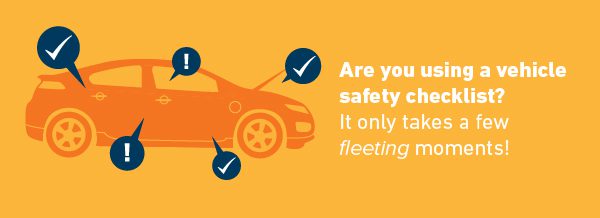
For more information, download our vehicle inspection checklist and check out our instructional online resources.
Fleet Safety FAQs
What is fleet safety?
Fleet safety means taking proactive steps to keep both drivers and vehicles safe on the road. It covers everything from enforcing safe driving policies and maintaining vehicles to using data and coaching to encourage safer habits behind the wheel.
What is a fleet safety program?
A fleet safety program is a coordinated system that helps companies manage risk for employees who drive on the job. It brings together written safety rules, regular training, vehicle inspections and technology tools to prevent accidents, protect drivers and reduce costly downtime.
How do I get fleet safety certified?
Fleet safety certifications are offered by organizations such as the National Safety Council (NSC) and other industry groups. Earning certification typically involves completing approved safety courses, demonstrating program compliance and renewing credentials through continuing education.
What is a fleet safety package?
A fleet safety package usually combines multiple resources and tools designed to simplify program management. These might include telematics systems, dashcams, maintenance scheduling software and driver safety training — all working together to help employers monitor, maintain and continuously improve fleet safety.
Strengthen Your Fleet Safety with FFVA Mutual
Are you looking to elevate your fleet safety program? Take a look at the FFVA Mutual employer toolkit or check out our recent post on workplace cell phone policies. Our expert safety consultants also offer a defensive driving course at no cost to policyholders.
You can also join the movement for safer roads, participate or learn more in the Motor Vehicle Accident Prevention Stand-Down.








